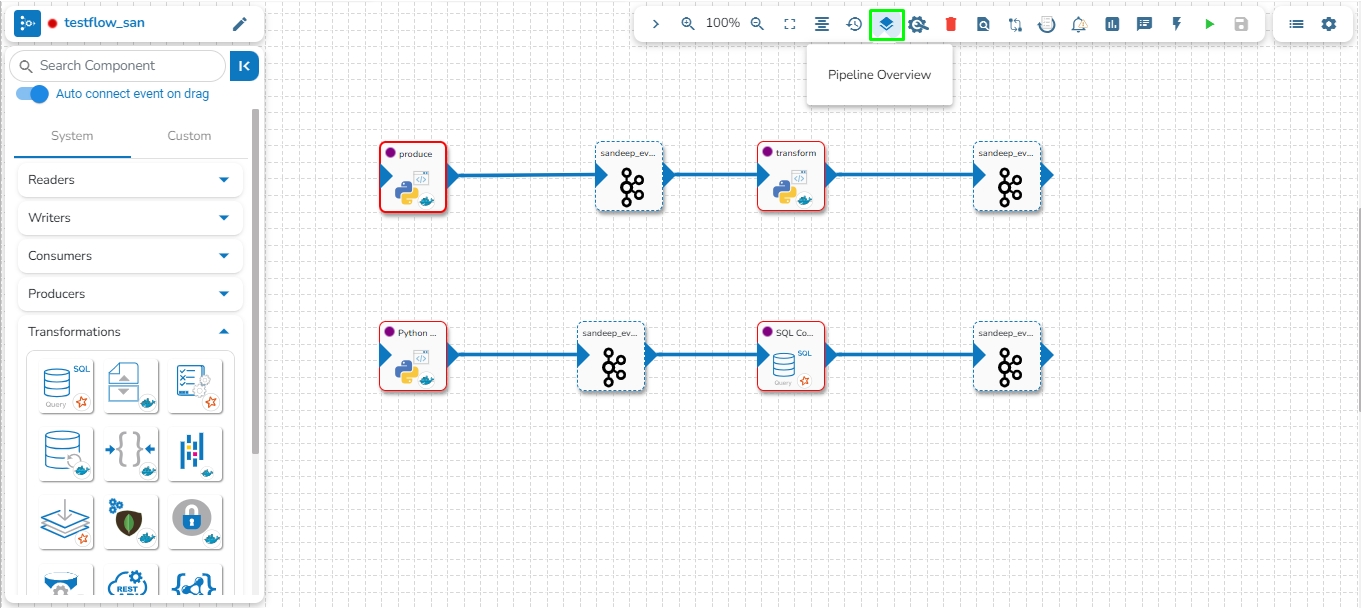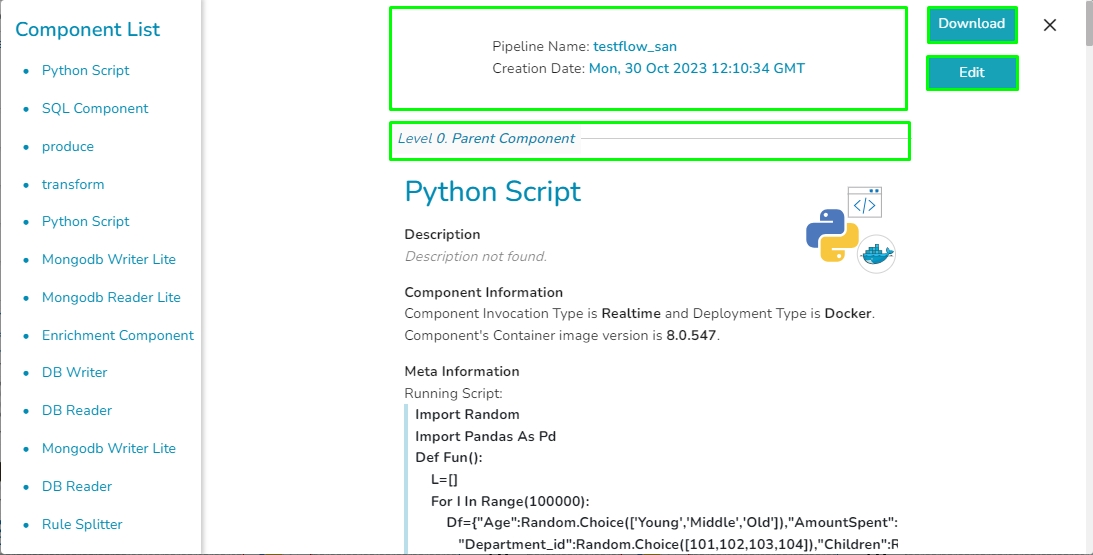Pipeline Overview
This page provides an overview of all the components used in the pipeline in a single place.
The Pipeline Overview feature enables users to view and download comprehensive information about all the components used in the selected pipeline on a single page. Users can access meta information, resource configuration, and other details directly from the pipeline overview page, streamlining the process of understanding and managing the components associated with the pipeline.
Check out the given demonstration to understand the Pipeline Overview page.
The user can access the Pipeline Overview page by clicking the Pipeline Overview icon as shown in the below given image:

There are following options on the pipeline overview page:
Component List: All the components used in the pipeline will be listed here.
Creation Date: Date and time when the pipeline created.
Download: The Download option enables users to download all the information related to the pipeline. This comprehensive download includes details such as all components used in the pipeline, meta information, resource configuration, component deployment type, and more.
Edit: The Edit option allows users to customize the downloaded information by excluding specific components as needed.
In the pipeline overview page, components are listed based on their hierarchical level, denoted by Levels 0 and 1. A component at level 1 indicates a dependency on the data from the preceding component, where the previous component serves as the Parent Component. For components without dependencies, designated as Level 0, their Parent Component is set to None, signifying no connection to any previous component in the pipeline.
